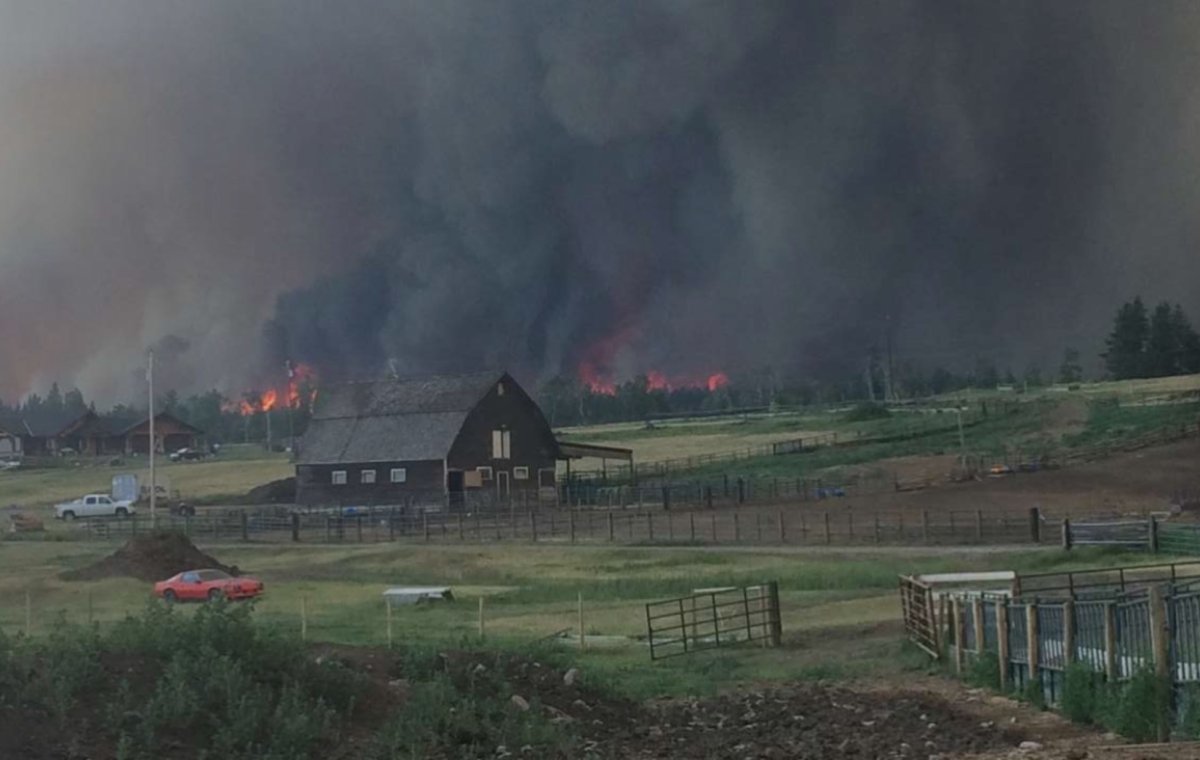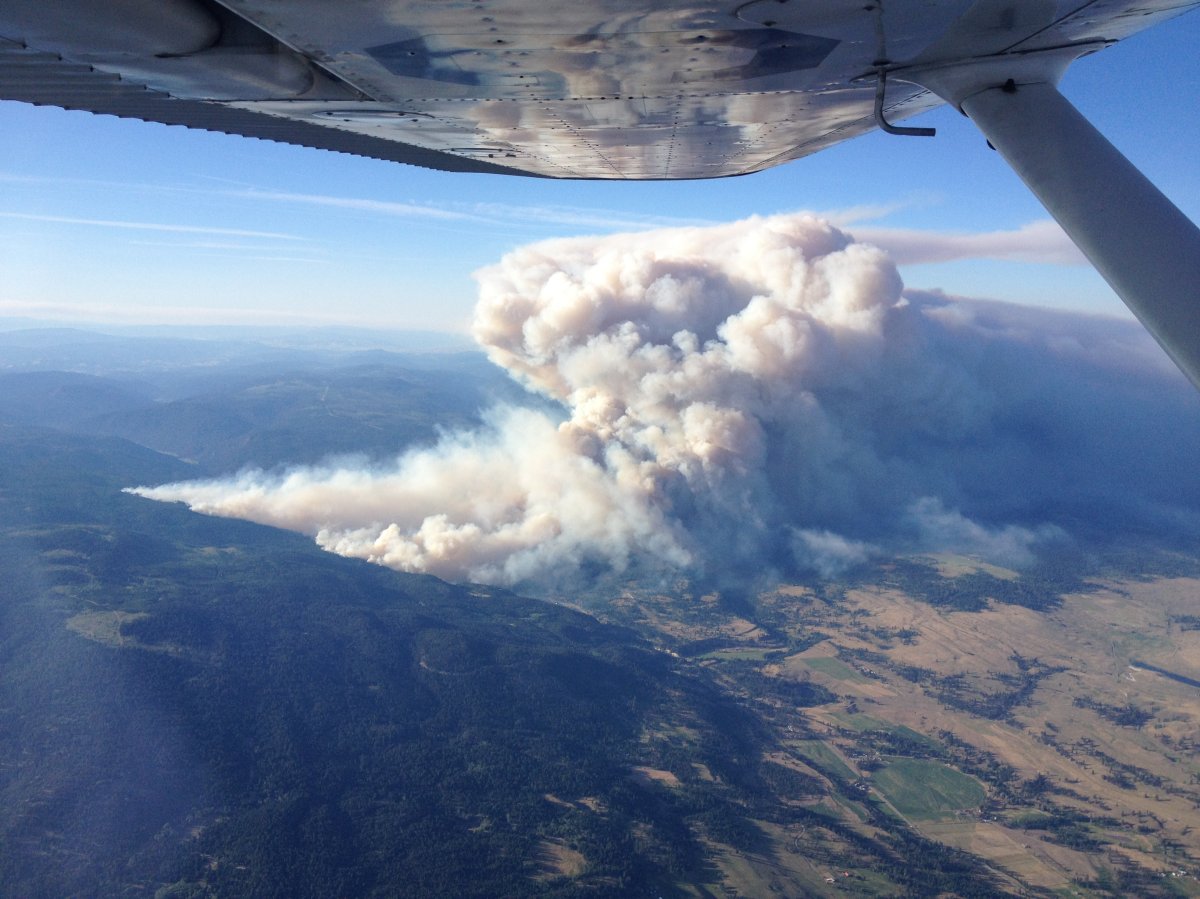Wednesday gave fire crews a chance to make some progress fighting the major wildfires across B.C.

Only 12 new fires broke out across the province on Wednesday bringing the total number of fires burning to 188. Twenty-two of those are considered wildfires of note.
More than 78,000 hectares have been scorched so far during this year’s fire season, starting April 1.
WATCH: On the fireline near Princeton

Despite some progress made, a new evacuation order was issued in the Hanceville area west of Williams Lake on Wednesday afternoon.
The evacuation order was issued for an eight-kilometre-wide area running south from the existing evacuation area south of the Chilcotin River at Hanceville to Abrams Lake, including Fletcher Lake Road (700 Road) and Fletcher Lake. Stone Reserve is covered under an existing evacuation order.
READ MORE: Williams Lake remains under evacuation alert
The evacuation route is north along the Fletcher Lake Road through Lee’s Corner and east on Highway 20.
Many in Williams Lake are breathing a bit easier today, however, as Wednesday’s potential rough weather did not roll through the area. Around 10,000 people have been under evacuation alert since Monday night and with gusty winds and lightning back in the forecast for the weekend, there may be some nervous days ahead.
WATCH: More resources en route to battle wildfire near Williams Lake

“Yesterday the fire crews were generally very pleased with what they were able to do,” said Al Richmond, chair of the Cariboo Regional District. “They did some back burns, both in the south Cariboo and the central Cariboo. The wind didn’t come up like they anticipated so that gave the firefighters all day to make more inroads and build some fire guards and do the other work they’re doing.”
FULL COVERAGE: Wildfires burning around B.C.
Richmond said the backburning in the area is very important to keep the fire from moving forward towards Williams Lake. He added the new evacuation order was put in place when the fire jumped the Chilcotin River on Wednesday.
“It’s a rural area, it’s quite remote, so there’s not a great deal of people out there but … because it’s so remote … those folks should prepare and get out of that area as quickly as possible.”
He added that while the fire situation is fluid, crews were pleased overall with the preventative work they were able to do on Wednesday.
“Hopefully, they will be able to get some more work done today, ahead of this weekend’s event, which, if it happens, could make things very tense again,” said Richmond.
WATCH: Al Richmond of the Cariboo Regional District Chair confirmed an evacuation order has been issued for the Fletcher Lake region, but provided positive updates that fire guards are slowing the blazes.

About 38 kilometres north of Williams Lake, a community is making headway in its firefighting efforts.
The Soda Creek First Nation, along with B.C. Wildfire Service crews, have been battling the Soda Creek fire since Friday. They are using bulldozers and air support and have built a containment line that has held back flames from reaching their homes.
The fire is estimated to be 100 hectares in size and 25 per cent contained.
But crews are continuing to work hard in the region to fight the flames.
Two fires are still burning near the small community of Little Fort, about 93 kilometres north of Kamloops but people are being allowed back home as the evacuation order was downgraded to an alert.
The topography and tough terrain have made it almost impossible for ground crews to fight the flames.
They’re relying on aerial support with six helicopters making up to 100 water drops each day.
WATCH: Global News has an exclusive look at one of the major forest fires burning across B.C. Lynn Colliar reports:

In Ashcroft, where a major wildfire nearby is now estimated to be 11,500 hectares, some residents were allowed to return home on Wednesday.
Power is slowly being restored to the community.
Residents can thank the combined efforts of fire crews and area residents who built a number of fire lines to keep back the flames.
“It was a tremendous effort from everybody on board,” said Gilles Guay from the Ashcroft Indian Band.
WATCH: Some residents of Ashcroft have been allowed to return home, and they’re thankful that they have something to come back to. Paul Haysom reports.

The Ashcroft reserve fire continues to be the biggest burning in the province.
Full list of wildfires of note with evacuation orders and alerts
Since the wildfires began spreading aggressively across B.C. last week, more than 45,000 hectares — or about 450 square kilometres — have burned.
That is about the size of Vancouver, Richmond, Burnaby, New Westminster, Port Moody and most of Coquitlam combined.
As of Thursday morning, the total number of evacuees into Prince George, who have registered at the Emergency Reception Centre at the College of New Caledonia was 6,029 (4,811 adults and 1,218 children). So far the City has handed out roughly $458,000 in grocery vouchers.
In total, according to the Canadian Red Cross, there are 16,250 evacuees with 9,429 registered and 4,655 in lodgings provided by emergency services.










































Comments